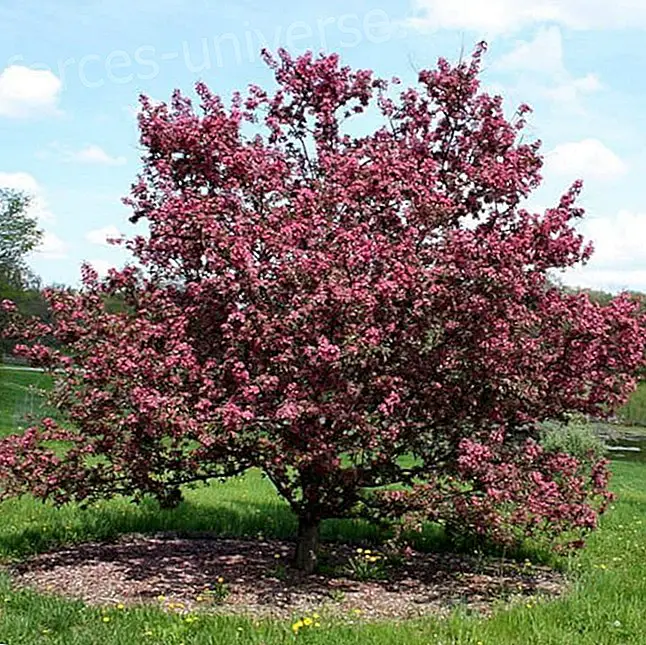
Natural medicine constitutes a preventive, curative and regenerative system that is based on the immutable laws of nature. There are some basic principles by which natural medicine is governed in its curative or therapeutic actions or actions: healing or improvement is obtained thanks to the "vis medicatrix naturae" or healing force of nature itself. Another principle would be that of "primum non nocere"; by which it extends that we should never harm the patient in our therapeutic or professional actions, and finally, contemplate the principle of treating the patient individually according to that saying of Hippocrates (Father of Medicine): “there are no diseases but sick. "
Regardless of this, any medical or therapeutic procedure, whether of natural or conventional medicine, must always respect the patient's full freedom to accept, follow or abandon treatment when deemed appropriate.
Based on these basic principles, we can understand that; confronted the primary and secondary causes that cause this disease or Alzheimer's disease against the wide, deep and persistent favorable effects of natural medicine properly channeled. We can realize that scientific natural medicine has much to say and do in preventing, combating and curbing the progress of this terrible disease that is causing a worldwide pandemic in overdeveloped and aging countries; and that ends human beings in an unfortunate vegetative state, which is manifested by a devastating mutism and immobility and a total physical-psychic incapacity. Until reaching this final irreversible state; the patient loses track of time, space and reality; and live as if it were an eternal present, without past or future.
Alzheimer's disease is a dementia syndrome characterized by a progressive deterioration of mental faculties, affecting memory first; and then to the orientation, reasoning ability, affectivity, sleep, motor activity and many other faculties necessary for the performance of daily life activities. The disease is slowly and progressively leading irremissibly to total disability and death. It can manifest itself from 50 years of age, although the disease may be developing from the age of 20. The evolutionary course and the symptomatology that it presents is very variable; and it can be said that there are no diseases, but Alzheimer's patients. The duration of the disease goes through a series of stages; The patients can live between 3 to 20 years, with an average of about 7 years.
The disorders that these patients present are; as they said, very varied and flowery and depend on the evolutionary course, and the stage of the disease. Thus, depression, aggressive behavior, night agitation, insomnia, constipation, urinary and fecal incontinence, feeding problems, infections, dehydration, falls, pressure ulcers, etc. can be observed.
Why does this happen?
Because the brain is losing neurons (It is decapitalized in neurons), through neurodegeneration and; In addition, there are failures in nerve neurotransmission, especially affecting cholinergic neurotransmission (due to lack or shortage of acetylcholine), which is the neurotransmitter that is most involved in memory loss. On the other hand, the brain tissue is “getting dirty”, being loaded with old-age pigments; and there are some deteriorated or destroyed areas known as neuritic plaques (which affect axons
2
neuronal), and neurofibrillar clews (Affecting neuronal bodies). These characteristic lesions of the disease are related to the presence or deposit of certain abnormal proteins in brain cells or in their environment. Thus, we have the deposits of beta-amyloid substances (insoluble waxy substance), in the environment of neurons and the Tau protein within the neuronal cytoskeleton. These metabolic or deposit alterations come from alterations or mutations of genes, especially on chromosomes 1, 14, 19 and 21. Currently 5 genetic loci are known, potentially associated with Alzheimer's disease: On chromosome 21 (The precursor gene of the beta-amyloid protein), on chromosome 19 (Genotype Apo E 4), on chromosome 14 (Presenilin -1 gene), and on chromosome 1 (Presenilin -2 gene).
Genetic screening is becoming a routine technique in the diagnosis of Alzheimer's, in some specialized centers. A curious fact observed, is that some neurons commit suicide by scheduled mandate. This phenomenon, known as apoptosis, is caused by influences not yet determined. It seems that this responds to a natural law; whereby nature makes old or damaged neurons disappear, which don't work.
As a whole, it can be said that in Alzheimer's disease; the brain runs out of neurons, degenerates, dies prematurely, which leads to cerebral atrophy that is predominantly located in certain areas (cerebral cortex of the frontal, temporal, hippocampus area, etc.), and in an asymmetric manner Electric. As a result of atrophy and loss of brain volume, the grooves or brain clefts become more pronounced and the ventricles wider and dilated. The aggressions that a person's brain can receive - whether persistently or intermittently - throughout their life as a result of following an insane life (Alcoholism, nicotine, various intoxications, psychosocial and professional stress, aggression by free radicals, oxidative stress, arterial hypertension, diabetes hellitus, etc.), and by inevitable accidents, can cause suffering, brain damage with progressive oppressed death of neurons . Up to a limit in which brain activity begins to decompensate by making dementia present; sometimes silent, overlapping and sometimes more acute. Although in the case of Alzheimer's disease, the course will always be progressive; unless it is slowed down or improved, with due treatment.
A definitive diagnostic confirmation of Alzheimer's disease is very difficult or impossible to perform in the patient's life, if a brain biopsy is not used. Histopathological studies on Alzheimer's disease carried out so far, have been done with autopsies or autopsies performed on deceased subjects; thanks to these necrotic or histopathological studies that began in 1907 with the German neuropathologist Alois Alzheimer, to which the name of the disease who studied a patient of 51 years with this evil-, the clarification of this disease has advanced a lot. For the diagnosis of Alzheimer's disease, there is also a battery of neuropsychological and psychometric tests that measure or assess the subject's cognitive abilities (cognitive minitests, memory tests, orientation, depression, test of the clock), and scales of assessment of the functional capacities for the development of the activities of daily life (both basic and instrumental).
These neuropsychological and functional tests, which sharpen quite well in expert hands next to the neuroimaging procedures that are used in the current clinic such as CT (Computerized Axial Tomography), NMR (Magnetic Resonance Nuclear ethics), PET (Positron Emission Tomography) and SPECT (Single Positron Emission Tomography), etc., can almost be confirmed (Sometimes with more than 95% reliability), the existence of an Alzheimer in a patient, without resorting to brain biopsy.
It also helps in this need blood and organic fluids and fluids, to rule out the presence of syphilis, AIDS, slow virus brain diseases, lack of
3
Vitamin B12 and folic acid, cases of hypothyroidism, etc. Y; of course, the genetic study to confirm the alteration in chromosomes. The obvious fact is that dementias are very common ailments in the advanced ages of life, with Alzheimer's disease covering 50-70% of all of them; and dementia of vascular or multi-infarct origin, 40-50%. Other senile and presenile dementias would constitute 15%. Sometimes, senile dementias do not appear purely, but mixed. These are called mixed (for example Alzheimer's + heart attack); and would constitute another 15%.
Accurate statistical and socioeconomic data on Alzheimer's disease have been recorded. This is how some 200 million people are affected by this evil in the world. About 450, 000 people suffer from Alzheimer's disease in Spain. Among them, 64% are women and 36% men. 90% of Spanish patients have not yet been diagnosed. 10% do not receive treatment. Alzheimer's disease is the fourth cause of death in Spain. Its incidence in our country (Spain), is 1 case year per 100 people. Its prevalence is 1.5% among people aged 60 to 70; and 20% in those over 85 years old. It is necessary to highlight the dementias that are transitory (False dementias) due to problems of depression, malnutrition, craniocerebral trauma, various intoxications, of the true dementias (Irreversible or incurable) - although always treatable and relievable - such as Alzheimer's disease, dementia multi-infarcted arteriosclerotic, Nieman-Pick disease, Biswanger, etc. Among other reasons, not to scare the family or the patient himself of something that has a solution.
As we have seen, Alzheimer's disease is a complex and multifactorial disease and still remains; Despite the great advances, a great unknown. Its preventive and curative approach should be done from an integrative and multidisciplinary point of view.
The solution is to apply the knowledge and principles of scientific natural medicine as a basic or basic support point. This is what really enables an optimistic and realistic aptitude in front of her. The curative action of nature and of the psychosomatic, social and ecological balance would be based on the favorable action of these stimuli as a function of time.
It is necessary to understand, that the patient has all his life ahead to be able to influence his body and brain with repetitive natural stimuli; and that time causes these effects to be cumulative and empowering, against each other. Time is a factor in favor of the patient in this regard.
Recall that the basis of preventive, curative and regenerative action of nature (Vis medicatrix naturae), is based on principles that, although powerful, are available to anyone. Natural medicine is a causal integral medicine; that is, what it intends is to cure the disease by suppressing the primary or distant causes of it. This type of medicine helps or favors the body's own healing or regenerative mechanisms, through the following mechanisms:
• Derivation and excretion: Purification of the body and blood and also of the brain is stimulated, through the elimination of bad moods, foreign substances, toxic or metabolic residues, etc., by the kidneys, feces, breathing, sweat, lymphatic drainage, etc. The outstanding empirical therapists of the past (Kuhne, Kneipp, Priessnitz, etc.), achieved such good results; even in cases of dementia or madness, especially because of the derivative and purifying effects of their baths and purifying diets.
• Provocation: Stimulation and repeated activation of organic defenses and mechanisms
4
of elimination and regeneration. Sometimes, beneficial, repetitive and cumulative stimuli are required for the help of physical exercise, derivative and stimulating baths, sun baths, steam baths, showers, compresses, etc. to produce healing crises and finally achieve definitive healing. In the regenerative and reparative effect of the brain, we have to state that certain special nutrients (Vitamin E, vitamin C, magnesium, selenium, B complex, certain amino acids, etc.), play a very important role.
• False cure: Treatment should avoid masking the disease and its symptoms. As the natural medicine, what it pursues is the suppression of the primary or true causes of the diseases, it avoids in turn that, after an apparent cure, a sick, overlapping or masked state; which is what happens many times, after symptomatic treatment of scholastic or conventional medicine. This contains a certain practical utility in Alzheimer's patients; since the natural therapy with its favorable and persistent effects, removes obstacles for the patient to slowly improve or recover his faculties, even within the context of a conventional treatment. The great advances achieved in recent times; more regarding the diagnosis than the treatment of this disease, they advise that the principle of complementarity should be sought, between natural and conventional medicine. Hence, the approaches that have been given in this article coincide with those of holistic or holistic medicine. In any case, it is very necessary to establish as early as possible the medical diagnosis of the disease and; From that moment, channel the integral therapy. In this comprehensive approach we contemplate the following sections:
1.- Treatment or prevention of genetic causes. You have to ask to what extent natural medicine; Through proper life hygiene and healthy behavior, you can counteract that gene mutation or make the effects or consequences of that mutation not manifest. And if they do, let them do it as late as possible. The influence of healthy behavior and a favorable ecological environment can be highly positive and beneficial for any patient. It seems; according to recent research, that the influence of genes and their mutations could be partially offset, with these natural corrective measures, which could have a positive impact on Alzheimer's patients. That is, that healthy behavior and favorable environment are considered more influential, than genotype in the life course of people and their diseases.
2.- Prevent or stop the loss of neurons. Everything that acts or influences as a wrong and insane life practice with everything that it entails (risk factors, unhealthy environment, excessive ambitions, intoxications, stress, unfavorable inheritance ...) can contribute to losing more neurons than bill; and we end up deficits of these valuable nerve cells, for mental functions. On the contrary, everything that derives from a healthy lifestyle and a relaxed and positive mental aptitude is highly protective and preventive against the loss of neurons from birth to death. This practical approach to a healthy life ("Healthy Mind in a Healthy Body") is what natural medicine preaches and defends as a mandate of nature; and of course, also in Alzheimer's patients.
3.- Improve cholinergic neurotransmission. This can be achieved by the contribution or ingestion of choline, lecithin, phosphatidyl choline, phosphatyl serine, etc .; and above all, with the recently commercialized anticholinesterase preparations. The preparations of the lecithin group, which are included in the phospholipid family, have regenerative effects of the sheaths or covered with honeydew, of the nerve axons and also increase the pool or reserve of acetylcholine in the nervous synapses . Finally, some of them also have lipid lowering effects. As for anticholinesterase preparations that inhibit the destruction of acetylcholine by acetylcholinesterase, they are very indicated drugs
5
in mild or moderate Alzheimer's disease, achieving good results in established treatments (congnitive, psychostimulant and rehabilitative therapies); and even, they can slow down or slow the progress of the disease.
4.- Improve the functioning of neurons and brain activity. "Every organ that does not exercise is atrophied" and "the function makes the organ." This principle of classical physiology; Even with all its value and even more, we must resort to daily psychoactivation in Alzheimer's patients. Read, speak, write, draw, do crosswords, watch TV, play chess, watch family album, various hobbies, etc., all to get that mental activation. It has been shown that daily learning and appropriate brain exercises stimulate or favor neurogenesis. Programs in workshops in order to improve memory and cognitive functions with good results are being carried out in certain institutions of some communities.
5.- Stimulate or promote socio-activation. Good treatment and relations with the family, neighbors, old people's clubs, civic centers, excursions, visits to museums, attending places of recreation and conviviality, dances, trips, birthday parties, conferences, debates, etc., are good means to socially activate Alzheimer's patients. Of course, it would be necessary to contemplate the capacities and possibilities of these people, in participating in such activities.
6.- Activate or stimulate neuronal regeneration. According to scientific evidence from various American and English universities, the classic principle that neurons cannot regenerate can no longer be sustained scientifically. Moreover, in the brain there are certain numb or reserve neuronal circuits, which can be conveniently reactivated under powerful and repetitive positive stimuli. This has been evidenced in principle in animals (especially in rodents), it seems that it is also true in man. Natural medicine (which is actually an energy medicine) can, through its mechanisms and stimuli, reactivate the regeneration of neurons and numb or reserve circuits. This is of particular importance and usefulness in Alzheimer's patients.
7.- Adopt a preventive attitude towards Alzheimer's, from the earliest childhood. You have to consider life as a vital journey ( A continuous ), which may end in a good or bad way. In this trajectory, it is necessary to protect the brain with special attention and avoid cerebral self-aggression. The caritids thicken and become sclerotic; and the brain becomes congested and becomes deficient in blood, in the long run especially when we suffer chronic stress. On the other hand, we must avoid heavy poisoning in the brain of heavy metals (Aluminum, lead, zinc). Particularly, the aluminum deposit in brain tissue seems to be related to Alzheimer's disease.
8.- Improve the natural and ecological environment of the patient. The patient must live in a healthy habitat that is comfortable, easy and familiar, clear of architectural barriers, difficulties and obstacles. Free of noise, harmful radiation, equipped with green areas or gardens, shadows to protect from the sun, benches to sit, well signaled, etc. Recently it has been shown in some universities (Miami Medical School), that music (Music Therapy) can greatly benefit this type of patient. Both in the form of musical thread, listen to music on the radio, transistors, etc., individually or let them participate in groups playing musical instruments. Such individual activities; or as a group, they improve the behavior of the patients, sleep disorders and make patients more communicative and participatory in the recreational and recreational programs. All this is explained, because music increases the blood level of certain neuro-transmitters and hormones such as melatonin, serotonin, endorphins, which produce joy and
6
wellness. Another attempt carried out in clinics in Scotland, has been to take the sick to aromatic gardens, full of flowers, plants, colors, etc., where they have walked, rested or have done gardening work That, also achieving positive effects. We know that flowers and their aromas have very positive effects on the mind and mood and this is known by the therapy of Bach flowers.
9.- Positioning of healthy behavior. The positioning of a healthy behavior within the context of the biological-natural laws and the moral order will always be in force, regardless of the approach given by medicine, which corresponds to its time. And it will be necessary to continue complying with the principle of complementarity; although the ideal would be to achieve full integration or merger of all the therapies or medicines in a single system, which today is already outlined as holistic medicine Ethical or integral. You are already seeing signs that this will happen some time. Meanwhile, we will have to continue investigating new inter-disciplinary and multidisciplinary ways to solve this Alzheimer's problem which; Looking to the future by the progressive aging of the population and geriatrization of medicine-, it will be increasingly pressing.
Final words
The world of Alzheimer's disease is in turn tragic and fascinating. It is the price that we have to pay for living so long and in breach of a lot of our lives the biological-natural and moral laws, which are our own. The brain is a very resistant organ, but when it succumbs, the death of the self and the personality occurs. Although some authors say that the deaths caused by chronic and degenerative diseases are nothing other than the failure that has brought success with the current postmodern civilization; Natural medicine, as a healthy life system, will always be at our disposal and will always be the valid support to treat any disease. And of course, also to prevent, curb or alleviate this terrible evil that is Alzheimer's disease. However, it would be imprudent not to take advantage of the technological, genetic, pharmacological, or other means or resources that scholastic or conventional medicine offers us step by step; but we must be careful not to deviate too much from the laws of nature, psychology and morals, which are ultimately to which we owe humans as biopsychosocial beings.
Dr. Víctor López García. Gerontologist
Alarm Signals
• Memory loss (First, of the recent, and later, of the old or remote), which affects the routine skills and performance of normal work.
• Difficulty performing familiar or common tasks.
• Language problems (Difficulties with the expression or understanding of language).
• Space / time disorientation.
• Problems of abstract thinking.
• Place objects or things in places that do not belong.
• Lack or difficulty of recognizing objects or people.
• Incomprehensible changes in behavior or mood of the person.
• Personality changes with loss of initiative, neglect or abandonment in personal care, presence, etc.
The current research and treatment pathways for Alzheimer's disease, which are promising, are as follows:
7
* Administration of high doses of antioxidants. In certain neurodegenerative diseases such as Parkinson's, Alzheimer's disease, multiple sclerosis, etc. free radicals, coming from oxidative stress, certain antioxidant substances such as vitamins, trace elements, metalloenzymes (Vitamin E, vitamin C, beta-carotene, zinc, manganese, bioflavonoids, selenium, picnogenoles, etc.) appear to be swept away or suppress the deleterious effects of said radicals on neurons. Antioxidants have a promising future against aging, arteriosclerosis and neurodegenerative diseases such as Alzheimer's. It would be necessary to obtain sweepers or modulators of abnormal proteins (Beta-amyloid, Tau protein, etc.); and affecting the genetic alterations and purification of tissues. The injection of encoded genes is being used. Implant of neurons in damaged or damaged areas. This is being attempted in Parkinson's disease; and it may also be achieved in Alzheimer's disease.
* Regeneration or activation of mother or embryonic neurons; and activation of neural or reserve circuits. This could be achieved with the referred psychoactivation, in another section.
* Preventive Alzheimer's vaccines. They have tested a vaccine to prevent disease in rats, apparently with success. The immunization developed by Dale Schenk, in a California laboratory, is based on the prevention of beta-amyloid protein deposition.
* Administration of soy and derivatives and Mexican yam, as a source of phytoestrogens. Estrogens of plant origin have a special importance in women; since it has been evidenced that the lack of protection of estrogens in it (From menopause), is related to the appearance of Alzheimer's disease.
* Effects discovered in some plants such as ginkgo bilova, anapsos and cat's claw.
* Ginkgo bilova, is a tree that comes from China and is the oldest species among all existing in the world. Ginkgo bilova extract contributes to the maintenance of blood vessel dilation, thus facilitating the free circulation of blood that carries oxygen and nutrients to the parts of the body that need them. This action is of particular importance to the brain, where the faculties of memory and concentration reside. This preparation also has antioxidant properties (Against free radicals).
* Anapsos (Polipodium leucotomos) is a fern typical of certain areas of Central America, with rhizosomes being used for the treatment of skin diseases. It also seems to have anti-tumor, immunomodulatory (Neuro-immunomodular in Alzheimer's disease) effects, and is a potential neurotrophic agent.
* Cat's claw (Uncaria tormentosa), is a gigantic liana plant of the Rubiaceae family native to the Amazon, increases natural defenses and regulates immunoreactive processes. It is scientifically recognized that in Alzheimer's disease there are failures in the immunoregulation of the brain and central nervous system with possible phenomena of hyperreactivity and self-aggression, so that this type of plants is quite beneficial
Facilitated: Thank you Carmen, for sharing such interesting information about Alzheimer's, and distributed by Jorge E. Morales
or by Jorge E. Morales.






